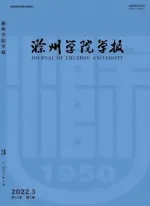从框架理论视角解读美国“英雄”形象
2012-08-15郜丽娜姚志英
郜丽娜,姚志英
(滁州学院外国语学院,安徽滁州 239000)
从框架理论视角解读美国“英雄”形象
郜丽娜,姚志英
(滁州学院外国语学院,安徽滁州 239000)
框架理论是一个语义研究的新视角,语言信息和词汇语义可以唤起框架;框架的构建有助于我们对语言表达的理解。本文从框架理论视角分析二战后美国总统就职演说中自由民主主题下的语言表达,发现美国总统使用一些特定语言词汇成功构建一个“英雄”框架来塑造美国的“英雄”形象,并把美国推广自由民主价值观的行为框定为“正义”与“邪恶”之战。
框架;框定;英雄;正义与邪恶
一、引言
在更广阔的认知环境中分析个别语言现象是非常必要的,“框架”概念为拓宽词汇及语法分析的范围提供了另一种认知方法。美国总统就职演说具有世界范围的影响力和重大的历史意义,是一种非常值得学界关注的文体。美国总统们通过精心准备的就职演说来宣布其施政纲领,劝说民众接受并支持他们。二战后,由于经济、军事实力迅猛发展,美国崛起为世界超级大国。为了寻求世界霸权,美国总统把向全世界推广美式自由民主价值观作为其对外政策的重要组成部分。自由民主价值观是美国意识形态的核心内容,为了达到意识形态输出的目的,历任美国总统在其就职演说中大肆谈论和鼓吹美式自由民主,并不同程度地表明其对外推广和输出自由民主价值观的态度和决心。在当今国际形势下,抵制意识形态输出和反对意识形态霸权是非常重要的。因此,本文运用框架理论分析二战后的美国总统就职演说中自由民主主题的语言表达,重点关注美国总统如何使用一些特定语言词汇成功构建一个“英雄”框架来塑造美国的“英雄”形象,并把美国推广自由民主价值观的行为框定为“正义”与“邪恶”之战。
二、框架理论
目前,“框架”概念已广泛地应用于认知心理学和人工智能等领域。1975年,Minsky[1]首次提出框架理论并把框架定义为表征某一固定情景的事实结构。Fillmore把“框架”概念应用于框架语义学。在框架语义学的早期著作中,“框架”是语言概念;在后期著作中,学者们认为框架是认知构建手段,可以利用框架表达结构化的方式[2]。Ungerer和Schmid认为,框架是与语境和文化密切相关的认知结构。框架概念只限于特定的语境和文化,可以把它看作是一种存在于各种各样真实世界情景中并为人类所共有的更基本的认知现象[3]。Lakoff提出框定的四条“道德”准则:(1)每个词汇唤起一个框架;(2)在框架内定义的词汇唤起该框架;(3)否定一个框架也是唤起该框架;(4)唤起一个框架也是强调该框架[4]。可见,一个框架内的词汇和框架是互相作用的,词汇唤起框架,框架使词汇意义结构化。人类可以根据人际关系、交际意图等社会因素和心理因素利用一些框架对人和事物进行概念上的“框定”;框定其实就是把某人某事看作一个框架中的成分,并由此设定这个成分与其他成分之间的关系[5]。框架为词汇在语言及话语中的存在和使用提供了背景和支持。框架理论是一种特别的观察词汇意义新方式。
三、自由与民主主题下的语言词汇分析
本文以二战后的17篇美国总统就职演说为语料,以框架理论为基础,根据语篇的具体特征,分析美国总统在就职演说中自由与民主主题下的语言词汇构建了怎样的框架以及如何构建该框架的。
(一)“英雄”框架
根据Fillmore,框架中的语项和其语义特征可以由信息槽和填充项来表示,同时一定数量的填充项构成信息槽[6]。根据牛津字典和我们的常识,英雄指的是负责任、伟大的人物,人们因他们高贵的品质、英勇无私、和为人们的利益不畏艰难险阻而斗争的精神而崇敬他们。采用屈春芳[7]的分析方法,我们将一个信息槽和其对应的填充项合称为一个框架组件。我们根据美国总统使用的语言词汇,分析出构建“英雄”框架的五个框架组件。
组件1英雄经常为别人提供物质和其他形式的帮助。
(1)But itprovideda firm base upon which all manner of men,of all races and colors and creeds,could build our solid structure of democracy.(Roosevelt)
(2)Assessing realistically the needs and capacities of proven friends of freedom,we shall strive tohelpthem toachieve their own security and well-being.(Eisenhower)
(3)The American covenant called on us tohelpshow thewayfor the liberation of man.And that is today our goal.(Johnson)
(4)Let us be proud that our system hasproducedandprovidedmore freedom and more abundance,more widely shared,than any other system in the history of the world.(Nixon)
(5)Our goal instead is tohelpothers find their own voice,attain their own freedom,and make their own way.(George W.Bush)
在这些填充项中,美国总统两次采用“提供”和三次使用“帮助”来强调美国一直期待并已经成功地为别国人民提供物质财富、安全和自由。两处使用“目标”表明:美国政府已经把帮助世界人民实现和享有美式自由看作美国的责任和义务,甚至政治目标。这些概念成分说明:美国政府有能力,而且乐于帮助其他国家,美国的行为符合“英雄”所为。
组件2英雄勇敢而坚强,不畏惧任何困难和危险。
(6)Let every nation know,whether it wishes us well or ill,that we shallpayanyprice,bearanyburden,meet anyhardship,supportanyfriend,opposeanyfoe,in order to assure the survival and the success of liberty.We will not negotiate it,sacrifice it;we will not surrender for it,now or ever.(Kennedy)
(7)When Americans courageouslysupportedthe struggleforliberty,self government,and free enterprise throughout the world,and turned the tide of history away from totalitarian darkness and into the warm sunlight of human freedom.(Reagan)
(8)Rather,it has been the risk-takers,the doers,the makers of things——some celebrated,but more often men and women obscure in their labor——who have carried usupthelong,ruggedpathtowards prosperity and freedom.(Obama)
短语up the long and rugged path表明美国政府已经下定决心去克服任何困难和承担一切责任来完成推广和输出自由民主价值观的事业。短语support any friend和oppose any foe解释了美国政府对待盟友和劲敌的态度,也表明了他们的政治立场。从本组件中的前四个填充项可以推论出:不论付出多大代价和牺牲,美国一直都在为了全人类的自由民主而英勇斗争着。
组件3英雄经常救别人于危难之中。
(9)We have saved a number of countries from losing their liberty.(Truman)
(10)America became the world’s mightiest industrial power,saved the world from tyranny in two world wars and a long cold war;…,reached out across the globe to millions who,like us,longed for the blessings of liberty.(Clinton)
从这两个填充项中的“拯救”可以看出,美国总统把美国政府看作世人的“救世主”。此外,美国总统告诉世人,美国已经拯救了许多失去自由的人民并从战争的暴虐中拯救了世界。美国总统使用这些词汇来框定美国的“拯救”行为就是英雄所为,美国就是英雄。
组件4英雄通常是强大有力的。
(11)Knowing that only a United States that isstrong andimmenselyproductivecan help defend freedom in our world,we view our Nation's strength and security as a trust upon which rests the hope of free men everywhere.(Eisenhower)
(12)They will go away because we,as Americans,havethecapacitynow,as we have had in the past,to do whatever needs to be done to preserve this last and greatest bastion of freedom.(Reagan)
(13)America becametheworld’smightiestindustrial power,saved the world from tyranny in two world wars and a long cold war.(Clinton)
美国总统使用短语“物产丰富的”、“始终有能力”和“最强大的工业国”来说明,美国完全有能力和实力来维护并推广美式自由民主。美国总统使用这些填充项来促使世人相信美国完全有资格有能力成为英雄。
组件5英雄通常是负责任的,并且具备强烈的道德意识。
(14)In the long history of the world,only a few generations have beengrantedtheroleofdefendingfreedomin its hour of maximum danger.Idonotshankfromthis responsibility,I welcome it.(Kennedy)
(15)Because we are free we canneverbeindifferent tothefateoffreedomelsewhere.(Carter)
通过这两个填充项,美国总统试图强调美国政府勇于承担捍卫自由和帮助其他国家分享美式自由民主的责任。美国被描写成具有高度责任感得国家,而强烈的责任感也是英雄必备特征之一。
这五个组件是“英雄”框架最具代表性的概念成分,突出了该框架的重要语义特征。总之美国总统使用这些语言词汇成功地构建了一个“英雄”框架。同时,美国政府也被框定为人类的解放者、自由的捍卫者和世界领导者。美国总统之所以极力塑造美国的“英雄”形象可以从一下三个方面予以解释:1)美国政府一直以来视“拯救世界”为己任,几乎每个总统都热衷于此;2)新保守主义的影响和制约也起到一定作用;3)部分美国人有帝国情结,坚信美利坚民族是世界上最优秀的民族。总之,美国长期以来都在谋求世界霸主地位,不甘心成为国际社会中的普通一员。
(二)“正义”与“邪恶”之战——推广自由民主价值观的道德框定
Fillmore指出,理解一个文本的过程涉及到搜索或感知框架,以及装配这类图式化的知识到文本“世界”的某些“想象”中;“框定”涉及到在最宽泛的意义上将事件语境化或情景化,即将已经建立起来的框架模式跟给定的词汇以特定的方式联系起来[8]。在特定语境中,每个词项所代表的框架被唤起,同时框架能反映出说话者或作者概念化图景的方式。他认为,依靠词汇框架可以进行语义解释,具有具体取值的属性形容词则是这些词汇的重要组成部分。美国总统采用用于不同评价的形容词来描述和框定美国政府、美式自由民主价值观、以及美国的对手和敌人。总之,美国总统使用具有积极评价意义的词汇来框定美国和美国推广自由民主的行为。相反,他们使用具有消极评价意义的词汇来框定对手和敌人。词汇和框架相辅相成,词汇唤起框架,框架确定词汇意义。美国总统描述自由民主主题时时使用的词汇把推广自由民主价值观框定为“正义”与“邪恶”之战,如以下例句所示:
(16)We will strengthen freedom-loving nations against the dangers ofaggression.(Truman)
(17)Democracy alone can supply the vitalizing force to stir the peoples of the world into triumphant action,not only against their humanoppressors,but also against their ancientenemieshunger,misery,anddespair.(Truman)
(18)Knowing that only a United States that is strong and immensely productive can help defend freedom in our world,we view our Nation's strength and security as a trust upon which rests the hope of free men everywhere.(Eisenhower)
(19)May the light of freedom,coming to alldarkenedlands,flamebrightly;until at last the darkness is no more.(Eisenhower)
(20)We will again be theexemplarof freedom and abeaconofhopefor those who do not now have freedom.(Reagan)
(21)When Americans courageously supported the struggle for liberty,self government,and free enterprise throughout the world,and turned the tide of history away fromtotalitariandarknessand into thewarmsunlightof human freedom.(Reagan)
(22)…a generation raised in the shadows of the Cold War assumes new responsibilities in a world warmed by thesunshineof freedom but threatened still by ancienthatredsand newplagues.(Clinton)
(23)And for the very first time in all of history,more people on this planet live underdemocracythandictatorship.(Clinton)
(24)We have confidence because freedom is thepermanenthopeofmankind,thehungerindarkplaces,thelongingofthesoul.(George W.Bush)
我们可以看出,凡是自由民主价值观不同于美国的国家被美国总统称为“压迫者”、“极权主义者”和“独裁者”。美国总统选择“侵略”、“恐怖”、“破坏”等词汇描述这些国家的对外政策和行为,使用“最黑暗”描写其国家政治制度。因而,在美国总统看来,这些国家的人民则是生活在“专政”之下。他们选用“饥饿”、“悲惨”、“绝望”、“憎恶”、“瘟疫”等具有否定含义的词汇来描述人类过去的生存环境。相反,他们选用具有积极意义的词汇来限定和美化美国及美式自由民主。在他们看来,“强大”且“物产丰富”的美国是“自由的榜样”和“希望之光”。此外,他们把美式自由民主看成光焰夺目并为全人类带来温暖和希望的太阳、光和火。可见,美国总统使用具有完全不同的抽象评价作用的词汇来表达对美国和其他国家两种完全对立的态度。他们直接突显对立双方的比较,把与美国相关的事物描绘成“正义的”和“美好的”,与敌对国家相关的事物则被描绘成“邪恶的”。根据美国意识形态制定的“世界二元论”,要么是好的,要么是邪恶的,美国总统成功地把推广自由民主价值观的行为框定为“正义”与“邪恶”之战。
四、结论
语言的过程也是一个框定和规范世界的过程。在特定的阶段,特殊的词汇将定义话语主体的身份和特殊意义。本文从框架理论入手,分析美国总统就职演说中自由民主政治主题下的语言词汇。分析结果表明美国总统通过一些特定词汇来塑造美国的“英雄”形象并把美国推广自由民主价值观的行为框定为一场“正义”与“邪恶”之战,试图为美国的价值观输出行为找到合理的借口和获得更多的国内外支持,从而构建美国意识形态输出的必要性和合法性。可见,框架理论为我们进行话语分析提供了一个新的有效工具。
[1]Minsky,M.A framework for representing knowledge[A].In P.H.Winston(Ed.),Thepsychologyofcomputervision[C].New York:McGraw-Hill,1975:211-277.
[2]Fillmore,C,J.The case for case[A].In E.Bach &R.Harms(Eds),Universalsinlinguistictheory[C].New York:Holt,Rinehart and Winston,1968:1-88.
[3]Ungerer,F.&Schimd.H.J.Anintroductiontocognitive linguistics[M].北京:外语教学与研究出版社,2001.
[4]Lakoff,G.Simple framing.Rockridge Institute.Retrieved Oct.20,2010,from http://www.rockridgeinstitute.org/projects/strategic/simple_framing.
[5]朱永生.框架理论对语境动态研究的启示[J].外语与外语教学,2005(2):1-4.
[6]Fillmore,C,J.Frame semantics.InLinguisticsintheMorningCalm[A].The Linguistic Society of Korea(Eds.).Soeul:Hanshin Publishing Company,1982:111-137.
[7]屈春芳.奥巴马就职演说中的“好朋友”框架研究及其语言教学启示[J].外语教学理论与实践,2010(3):57-64.
[8]Fillmore,C,J.The hard road from verbs to nouns[A].In Matthew Y.Chen,Ovid J.L.Tzeng &William S.Y.Wang(Eds.),AnhonorofWilliamS.Y.Wang:Interdisciplinary studiesonlanguageandlanguagechange[C].Taiwan:Pyramid Press,1994:105-129.
On the"Hero"Image of America from the Perspective of Frame Theory
Gao Lina,Yao Zhiying
Frame theory provides a new perspective for semantic research.Linguistic information and lexical meaning can evoke a frame and the construction of the frame is conducive to raising our understanding of linguistic expressions.Based on frame theory,this article focuses on linguistic expressions on the theme of values of freedom and democracy in American presidential inaugural speeches after World WarⅡ.It is found that American presidents frame American government as a hero and construct the moral framing of promoting values of freedom and democracy as a battle between"good and evil"by the use of some specific lexical items.
frame;framing;hero;good and evil
H313
A
1673-1794(2012)01-0052-04
郜丽娜(1982-),女,硕士,主要从事认知语言学研究;姚志英(1970-),女,硕士,副教授,滁州学院外国语学院副院长,研究方向:应用语言学和教学法。
滁州学院大学英语教学团队项目。
2011-09-12
